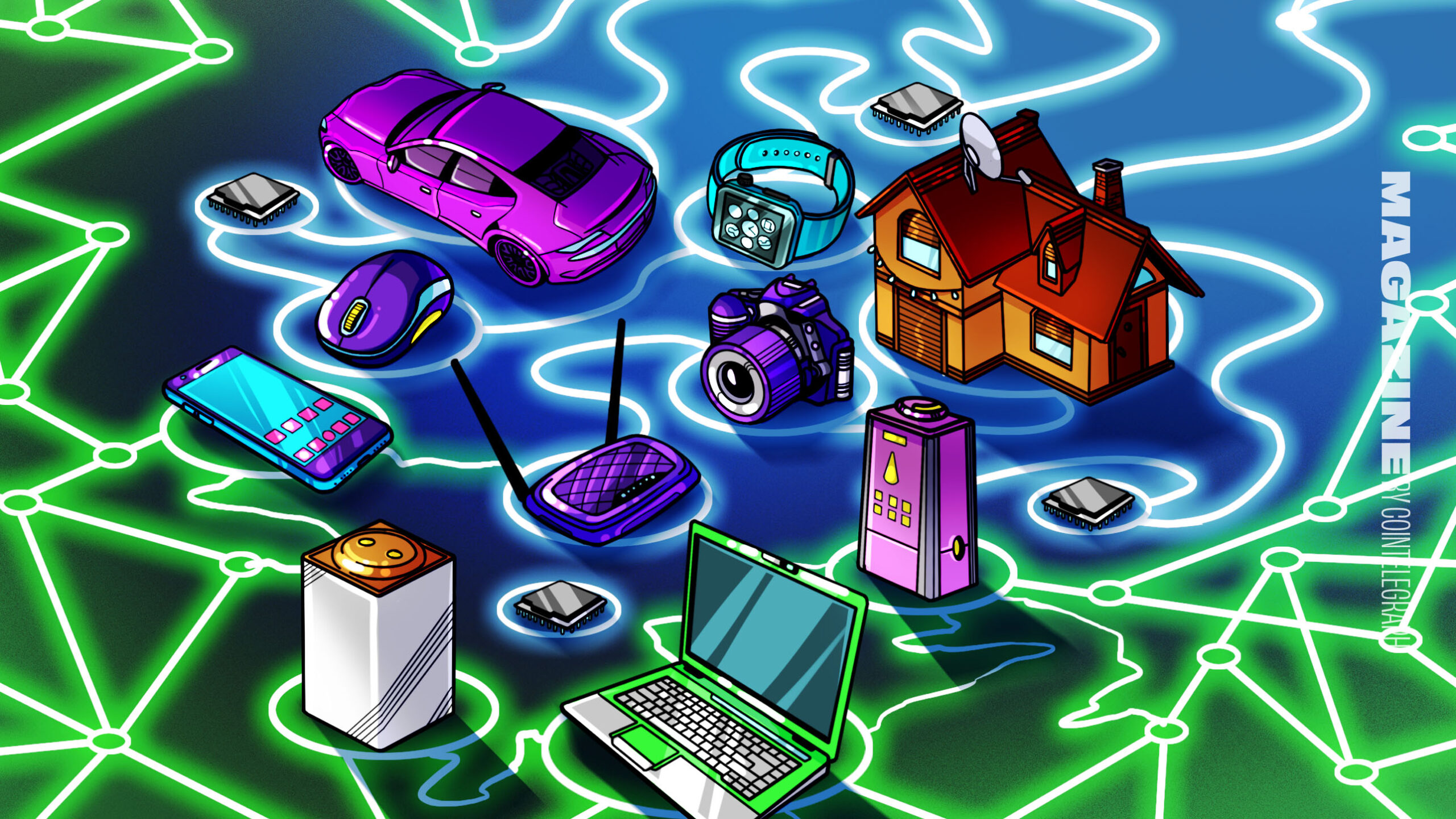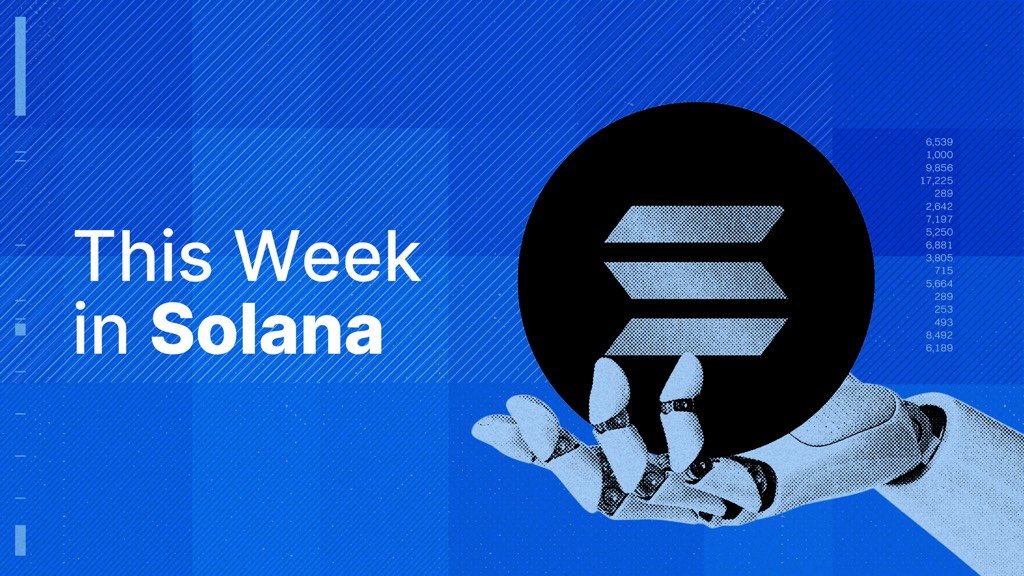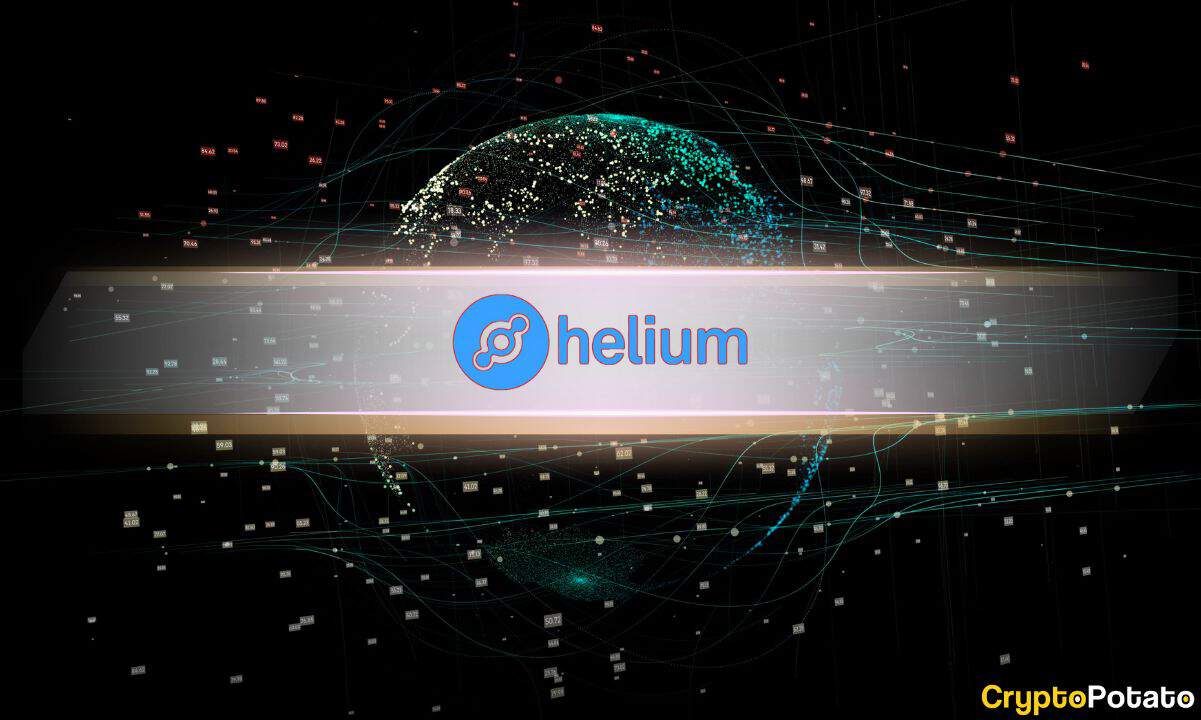Latest Solana News

7 months ago
XNET Partners with AT&T to Enhance Decentralized Wi-Fi Network
XNET, a project based on the Solana blockchain, has recently announced a strategic partnership with AT&T, a major player in the US telecommunications industry. This collaboration aims to enhance the efficiency of mobile data traffic management by allowing AT&T to offload some of its mobile data onto XNET's decentralized network of Wi-Fi hotspots. XNET incentivizes businesses and public spaces to deploy these hotspots by rewarding them with XNET tokens, effectively creating a distributed wireless network that alleviates congestion and improves overall coverage. As part of this agreement, which has been operational since September 2024, AT&T customers can seamlessly connect to XNET's Wi-Fi network, with AT&T compensating XNET for the data usage in dollars, which is then distributed to XNET's node operators in the form of tokens.
Currently, XNET boasts 688 active nodes and has facilitated connections for approximately 9 million users through its network. The co-founder of XNET, Richard DeVaul, emphasized the importance of their token in financing the network's infrastructure, stating that traditional equity or debt financing would have posed significant challenges. He described XNET as a prime example of Decentralized Physical Infrastructure Networks (DePIN), showcasing how the project has successfully utilized its token to bootstrap operations and equipment financing. This innovative approach positions XNET as a unique player in the decentralized network space, distinguishing itself from competitors like Helium Mobile, which focuses on individual hotspot installations.
While both XNET and Helium Mobile operate in the decentralized network sector, XNET's business model is strictly B2B, targeting high-value locations for hotspot deployment. DeVaul noted that they view Helium as a potential customer rather than a competitor, indicating a collaborative spirit within the industry. As the demand for decentralized networks continues to grow, partnerships like that of XNET and AT&T may pave the way for more efficient and widespread internet access, ultimately benefiting users and businesses alike.

7 months ago
India Hosts First-Ever Solana DePIN Summit in Bangalore
Bangalore, India’s tech hub, recently hosted the first-ever Solana DePIN Summit on March 25, 2025, marking a pivotal moment for the country’s digital landscape. This event gathered both Indian and international startups focused on Decentralized Physical Infrastructure Networks (DePIN), providing a unique platform for innovators to present their ideas to a global audience of investors. The summit highlights the growing trend of blockchain startups in India, particularly in the DePIN sector, which integrates IoT, energy networks, and wireless communications with blockchain technology to create more efficient and decentralized infrastructure solutions.
One of the key players at the summit was Wifi Dabba, a Y Combinator-backed startup based in Bangalore, which served as the title sponsor. Wifi Dabba utilizes Solana's blockchain to enhance broadband access in Tier 2 and Tier 3 cities through a DePIN model, collaborating with local operators under India's PM-WANI initiative. Co-founder Shubhendu Sharma emphasized that Solana's choice of India for its inaugural DePIN Summit underscores the country's growing presence in the Web3 space, as Indian startups leverage blockchain technology to tackle real-world challenges, particularly in bridging the digital divide.
Despite having only 41 million fixed broadband connections compared to China's 600 million, India is poised to make significant strides in its digital infrastructure. The DePIN model proposed by Wifi Dabba aims to lower the barriers to entry for broadband access, aligning with the Telecom Regulatory Authority of India's goal of achieving 100 million broadband users by 2030. Events like the Solana DePIN Summit are crucial for amplifying India's role in the global DePIN landscape, showcasing local talent and fostering international collaboration, ultimately positioning India as a key player in Web3 innovations and decentralized infrastructure development.

7 months ago
Grayscale Updates Top 20 Crypto Projects for Q2 2025
Grayscale, the world’s largest crypto asset management company, has unveiled its updated list of the Top 20 potential crypto projects for Q2 2025. This latest list introduces three promising newcomers: Maple (SYRUP), Geodnet (GEOD), and Story Protocol (IP), while removing Akash, Arweave, and Jupiter. As the crypto market continues to experience volatility, Grayscale is strategically positioning itself to capitalize on emerging trends that could redefine the industry landscape.
According to Grayscale's Market Insights report, the first quarter of 2025 witnessed a decline in the cryptocurrency market, mirroring the downturn seen in tech stocks and other high-risk assets. Although Bitcoin's network activity remained stable, interest in meme coins, particularly within the Solana ecosystem, has diminished. Nevertheless, Web3 applications across DeFi, AI, and infrastructure sectors have collectively generated over $2 billion in revenue. Notably, Sui (SUI) has emerged as a leading smart contract platform, boasting rapid transactions and low fees without the need for additional scaling layers, currently holding just 3% of Grayscale’s Smart Contract Platforms index.
For Q2 2025, Grayscale is concentrating on three pivotal areas: Decentralized Physical Infrastructure (DePIN), Real World Assets (RWA), and Intellectual Property Tokenization (IP). The addition of Maple, Geodnet, and Story Protocol to the Top 20 list reflects this focus. Maple is a lending platform for institutional clients with a total value locked (TVL) exceeding $600 million, while Geodnet provides real-time positioning data across 130+ countries, generating over $3 million in monthly revenue. Story Protocol aims to tokenize the $70 trillion intellectual property market, attracting high-profile artists like Justin Bieber and BTS. However, Grayscale cautions that these assets are highly volatile and risky, particularly highlighting GEOD's lack of major exchange listings as a significant concern.

7 months ago
SFT Protocol Partners with SOLPEN to Advance AI-Driven Decentralized Infrastructure
SFT Protocol, a prominent player in the Web3 landscape, has announced a strategic partnership with SOLPEN, an AI-driven DePIN ecosystem based on the Solana blockchain. This collaboration aims to redefine the interaction between decentralized AI networks and the Internet of Things (IoT), thereby strengthening the connection between Web3 technology and physical infrastructure. The initiative was revealed through SFT Protocol's official social media channels, highlighting the significance of this merger in advancing the capabilities of both platforms.
The partnership is set to merge SFT Protocol's robust solutions for DePIN infrastructure with SOLPEN's cutting-edge AI-driven wearable technology. This integration is expected to create a decentralized ecosystem that operates with low latency and high efficiency. By leveraging decentralized data processing and AI analytics, the collaboration promises to enhance real-world applications significantly. SFT Protocol has established itself as a key player in the DePIN ecosystem, focusing on blockchain-based infrastructure that supports seamless real-world applications, thus driving the broader adoption of Web3 technologies.
Furthermore, the collaboration benefits from Solana's high-performance blockchain, which facilitates unparalleled integration across various Web3 platforms. By setting new standards for decentralized infrastructure, both SFT Protocol and SOLPEN are enhancing the practicality and accessibility of their offerings. As they continue to evolve, this partnership is poised to lead towards a smarter, AI-integrated Web3 network, paving the way for innovative solutions in the decentralized landscape.

7 months ago
The Hybrid Nature of DePIN: Balancing On-Chain and Off-Chain Computations
The Decentralized Physical Infrastructure Network (DePIN) is emerging as a significant narrative in the cryptocurrency space, yet many projects within this domain are not fully on-chain as one might expect. DePIN projects, which connect and manage physical devices like wireless networks and energy grids, often rely on off-chain computations to handle the vast amounts of data generated. For instance, Helium, a prominent DePIN project, transitioned from its own blockchain to Solana in April 2023, seeking faster transaction speeds. However, even Solana's capabilities may not suffice for the real-time processing demands of many DePIN applications, leading to a hybrid model where off-chain computations are utilized alongside on-chain data recording.
Shuyao Kong, co-founder of the upcoming MegaETH, highlights that while some DePIN projects may market themselves as blockchain-centric, the reality is that fully on-chain applications are often inefficient and costly. The need for real-time computation, especially for executor devices that require immediate responses, complicates the feasibility of purely on-chain solutions. Zhe Wang, CEO of DEPHY network, categorizes IoT devices into sensors and executors, noting that while sensor data can be more easily managed off-chain, executor data demands prompt processing to avoid potential hazards. This necessity for speed and efficiency drives many DePIN projects to adopt a hybrid approach.
Looking ahead, the future of DePIN may involve a shift towards more specialized blockchain architectures that can better accommodate the unique computational needs of various applications. While current blockchain technologies struggle to support real-time transactions, there is potential for improvement as scalability advances. Experts predict that future DePIN projects will increasingly leverage modular designs, optimizing execution environments for specific tasks such as biometric processing or high-frequency sensor networks, thus balancing the benefits of on-chain and off-chain processes effectively.

7 months ago
Ether Reclaims $2,000 Support Amid Upcoming Pectra Upgrade
On March 24, Ether (ETH) managed to reclaim the $2,000 support level, although it remains 18% below the $2,500 mark seen three weeks prior. Recent data indicates that Ether has underperformed the altcoin market by 14% over the last month, prompting traders to speculate on its ability to regain bullish momentum. The Ethereum ecosystem has faced criticism for lagging behind competitors in user experience and scalability, which has negatively impacted network fees and transaction efficiency. The upcoming Pectra network upgrade, scheduled for late April or early June, aims to address many of these challenges by doubling the data capacity of each block and introducing smart accounts that enhance transaction functionalities.
The Pectra upgrade is expected to bring significant improvements, including reduced fees for rollups and privacy mechanisms, as well as increased flexibility for staking deposits and withdrawals. Arthur Hayes, co-founder of BitMEX, recently set a price target of $5,000 for ETH, asserting that it should outperform Solana (SOL). However, the sentiment among ETH options traders appears less optimistic, as indicated by the low cost of call options with high strike prices. Despite this, Ethereum continues to lead in smart contract deposits and is the only altcoin with a spot exchange-traded fund (ETF) in the US, currently managing $8.9 billion in assets.
Ethereum's total value locked (TVL) stands at $52.5 billion, significantly higher than Solana's $7 billion, with a 10% increase in deposits over the past month. The Ether supply on exchanges has also decreased, suggesting a long-term commitment from investors. Additionally, the Ethereum network is gaining traction in the Real World Asset (RWA) sector, further solidifying its dominance in decentralized finance (DeFi). Although Ether's price dipped below $1,900 earlier this month, the recent trends indicate a potential rally towards the $2,500 mark as traders continue to withdraw from exchanges, reflecting a more bullish outlook for the asset.

7 months ago
Beamable Shines at GDC 2025: A New Era for Decentralized Gaming
Beamable made a significant impact at GDC 2025, showcasing its commitment to decentralized gaming and innovative infrastructure. The event kicked off with an exclusive brunch that gathered industry leaders from major firms like A16z, Binance, and Meta. This gathering was not just a social event; it served as a platform for discussing the future of decentralized gaming and how Beamable's infrastructure can empower developers to create scalable and successful games. The atmosphere was charged with excitement as insights were exchanged, setting the stage for fruitful collaborations.
Throughout the conference, Beamable's leadership took center stage at various summits, including the Beamable x Solana Developer Summit. CEO Jon Radoff and CTO Ali El Rhermoul presented on the advantages of decentralized infrastructure for live game operations, emphasizing how it can mitigate backend risks and enhance cost efficiency. Additionally, COO Trapper Markelz engaged developers with real-time demos at the Sui Gaming Summit, focusing on Web3 monetization strategies. These sessions highlighted the importance of adopting Web3-native solutions in today's gaming landscape.
The networking opportunities at GDC 2025 were unparalleled, with Beamable hosting a lively happy hour that attracted a diverse crowd of developers and founders. The event fostered discussions about game development and backend tools, solidifying Beamable's role as a key player in the industry. With numerous meetings held throughout the week, Beamable connected with various studios and publishers, addressing their technical challenges and exploring partnership opportunities. As GDC 2025 concluded, Beamable remains committed to driving innovation in decentralized gaming and looks forward to continuing these conversations beyond the event.

7 months ago
Solana's Remarkable Rebound: Price Surge and Ecosystem Developments
In the past week, Solana has experienced a significant rebound, with its price surging 12% to reach $140. This uptick in value comes amid renewed market optimism, spurred by the Trump administration's softened stance on tariff negotiations and the U.S. Federal Reserve's decision to maintain interest rates. The total value locked (TVL) in Solana's ecosystem has also risen to an impressive $72 billion, reflecting growing confidence among investors. Notably, Solana's stablecoin supply has hit record levels, surpassing $12.8 billion, indicating robust liquidity and adoption within the network.
In ecosystem developments, Pump.fun has launched its decentralized exchange (DEX), PumpSwap, which aims to streamline trading for Solana meme coins. This move has prompted Raydium to introduce LaunchLab, a platform designed to compete with Pump.fun and retain its market share. Additionally, Volatility Shares has debuted two funds tracking Solana futures, SOLZ and SOLT, providing investors with new avenues for exposure to the layer-1 network. As institutional interest grows, Fidelity has registered the "Fidelity Solana Fund," potentially paving the way for a Solana ETF, which could further enhance market dynamics.
Despite the positive trends, Solana's decentralized exchange volume has seen a decline, dropping 20% to $8.06 billion. However, the overall market sentiment remains bullish, with Solana outperforming its rivals, including Ethereum and Bitcoin. The ecosystem's market cap has increased by 10%, and daily active addresses have risen to over 3.8 million. As Solana continues to innovate and attract attention, the coming weeks will be crucial in determining its trajectory in the competitive blockchain landscape.

8 months ago
Solana DePIN Sees Significant Growth Amidst Meme-Coin Decline
In February, the decentralized physical infrastructure network (DePIN) associated with Solana [SOL] experienced a notable rebound, driven by significant user growth in key projects such as Helium and Hivemapper. Helium Mobile reported a remarkable ninefold increase in users, reaching 145,000, marking its highest growth in a year. Hivemapper, a community-driven alternative to Google Maps, also saw its demand triple due to the introduction of new mapping devices. Collectively, these projects maintained steady revenues of approximately $350,000, indicating a stabilization in the DePIN sector for 2025.
The resurgence of DePIN could potentially serve as a catalyst for SOL's value, especially following a significant decline in meme-coin activity that adversely affected Solana's decentralized exchange (DEX) volumes. In January, during the peak of DEX activity, SOL reached a record high of $295, largely fueled by the excitement surrounding the TRUMP memecoin. However, a subsequent 60% drop in DEX volumes led to a decline in SOL's value, which has since stabilized above the $120 support level. The question remains whether DePIN can fill the void left by meme coins and bolster SOL's value moving forward.
Despite the resurgence of DePIN, the overall network activity within the Solana ecosystem remains heavily influenced by meme coins. Active addresses surged to 5.7 million during the TRUMP meme-coin craze in mid-January but saw a decline throughout February. Although there was a slight increase in active addresses to 4.4 million, this was followed by a drop to 2.7 million by the end of the month. By mid-March, the number of active addresses stabilized at 3.11 million, reflecting a 45% decrease from January's peak. As of now, SOL is valued at $130, maintaining its position above the critical 2024 support zone, leaving uncertainty about whether it can avoid further corrections.

8 months ago
Helium Network Expands Despite Token Decline and Past Controversies
In the fourth quarter, Helium's native token, HNT, experienced a significant decline, with its circulating market capitalization dropping from $1.3 billion to $1.0 billion, marking a 20% quarter-over-quarter decrease. The token's price also fell by 22%, decreasing from $7.54 to $5.88. Despite this downturn in the market, the Helium network continued to expand, particularly in the area of hotspot adoption. According to a report from Messari, Helium Mobile's number of hotspots grew by 14% QoQ, reaching 24,800 from 21,800. The service's unlimited plans remain competitively priced compared to traditional telecom providers in the US, and the introduction of the Discovery Mapping feature has incentivized users to share location data, although rewards have recently shifted from HNT to Cloud Points.
During the recent Hurricane Helene in North Carolina, Helium Mobile showcased its utility by maintaining operational hotspots that provided 5G coverage while many were left without electricity or water. The team also took proactive measures by distributing emergency kits, including Starlink devices, to assist affected communities. In addition to Helium Mobile, the IoT network also saw a 20% increase in hotspots during Q4, with a total of over 375,000 hotspots onboarded since migrating to Solana in early 2023. However, despite rapid infrastructure growth, demand has not yet caught up, as evidenced by low daily data credits (DC) usage.
Helium has faced controversies in the past, including allegations that its founders hoarded a significant portion of early token rewards, with insiders reportedly mining millions of HNT tokens worth $250 million at their peak. Additionally, Helium faced criticism for overstating partnerships, such as with Lime, the rideshare company, which clarified that their relationship was limited to a 2019 test. Similar issues arose with Salesforce, which denied any partnership, leading Helium to remove their logos from promotional materials. These controversies have raised questions about the company's transparency and the sustainability of its growth strategies.
Signup for latest DePIN news and updates